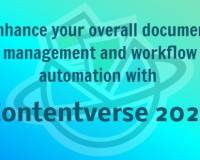When I was growing up, one thing I noticed about offices in film and on television was that paper files were EVERYWHERE. Stacks of them. Piles of them. Those poor characters were quite literally drowning in manila. And the unsightliness of those teetering towers traveled well beyond their Hollywood representation. My father’s insurance office, for one, lived and breathed paperwork. His desk was always hidden beneath a heavy manila blanket. And when I, myself eventually fell prey to the office life, files and folders never failed to surround me with their overwhelming presence.
Gradually over time those stacks began to shrink. Whenever I moved offices or took a new job, I noticed less and less of those paper piles and the filing cabinets where they came from. The cluttered set design of exhausted lawyers’ desks in movies was traded in for calm, sleek work spaces. These days, office workers get by on nothing more than a giant computer screen and a coffee-filled mug.


But where did all that paperwork GO, you ask. What happened to all those secretaries you’d see leaning on filing cabinets, finger-flipping through an endless sea of paper?
The answer is that Enterprise Content Management happened. Thanks to ECM, keeping physical files and folders in house is becoming a thing of the past.


But What Exactly IS Enterprise Content Management?
If we had to summarize, we could say that it’s a way to safely keep a company’s content preserved in one place for employees to easily access and share.
Everyone organizes things differently. You might like to have your clothes folded in drawers, while your spouse prefers everything to be hung on hangers. Organizing within a company is similar. Unless the entire staff was raised on the same farm, worked for the same company, and trained with the same mentor, it is without a doubt that each employee’s organizational style will vary.
When it comes to the archival of documents, so many factors come into play. When filing by date, do you organize by year, month, exact date, or quarter? When filing numerous clients, do you put them in order of brand name, industry, start date, or the person in charge of the account? And this is just the tip of the iceberg…
The possibilities are frustratingly endless and every person has their own point of view on what category takes priority. Within a large organization, such a disconnect can result in fragmented and unstructured data. Files go missing, time gets wasted, information could get leaked, and everyone just ends up in a bad mood. When content processes become chaotic, companies definitely feel the impact.


ECM is the Physical Going Digital
Enterprise Content Management is quite the all-encompassing system. It can capture, manage, store, and even deliver content. ECM is a conglomeration of strategies, methods, and tools, rather than a specific brand or software.
Every business on the planet has more content than they know what to do with. From spreadsheets to presentations, process documents to reports, employee files to anything involving sensitive or confidential information.
Throughout a common workday, employees need to be able to attain that information. Company content must remain accessible to its staff for research, reference, claims, and other purposes. Enterprise Content Management makes it easy for workers to search for and find the files or documents that they need. It’s a quick process that involves a thorough keyword search.


One could compare using ECM to having your company’s very own advanced Google search at beck and call. However, ECM is actually light years ahead of Google. Because instead of searching an enormous database with just a couple of keywords, you’re pinpointing exactly what you need, with all the specifics required to do so. And once the right files are found, one can then deliver them digitally to someone else in the system that needs it. It’s a process that saves a great deal of time.
Think of all the hours you spend…
- digging through physical documents,
- searching within those physical documents for the right tangible information,
- and then wandering around the office, hunting down the appropriate tangible person to give those physical documents to!
Whew. Just typing that sentence put us out of breath…


ECM Is Insanely Organized
With ECM, workers can not only find a file they need, but all the other content that relates to it.
For example, if you’re looking up an invoice, you can also quickly and easily view:
- The purchase order
- The packing slip
- The check that was used to pay the invoice.
- And any other document or file affiliated with that particular invoice!
Enterprise Content Management allows business owners to take control of organizing their company’s content. Everything is efficiently filed in a central location, putting everyone on the same page. Finally, content can be organized by what it is, not where it is.
This means NO MORE…
- hunting through paperwork
- creating needless duplicates
- chaotic collaboration
- high-risk security leaks
- wasting paid time.
It’s a way to save time and cost, make sure data is secure, increase efficiency and productivity, improve collaboration, and earn higher profits.


Is ECM the Same as Document Management?
Yes and no. Document Management is strictly about managing your documents, whereas Enterprise Content Management is a broader set of features.
Enterprise Content Management is a system that offers endless options, such as integrated scanning, long-term archiving, better delivery features, and more sophisticated storing management. Document Management is one of those options. And to many companies, it’s the most important feature.
When trying to sell you Document Management software, vendors may attempt to tell you about their product’s “enterprise” capabilities. But keep in mind that a real ECM solution goes far beyond a software that specifically specializes in Document Management. It’s important to know your company’s needs and requirements before making a decision on how to organize all of your precious data.


The Takeaway
Your company wouldn’t be what it is without the data and information that got it there. Tucking something away for safe-keeping no longer requires you to leave the room. And we have ECM to thank. We’ve come a long way from hiding behind folder forts and paper towers. Enterprise Content Management is the perfect solution for any company that plans on sticking around for GOOD.
We know. Enterprise Content Management can seem a bit intimidating at first. Which is why we’ve decided to focus on breaking all the elements down for you, so that everyone can know and understand the world of ECM. Stay tuned for our next explainer piece on Scanning for ECM!
Are you interested in finding out about Contentverse, the award-winning ECM solution that wrote this wonderfully informative blog? Take a tour of our software today and see all the great things ECM can do for your company!










